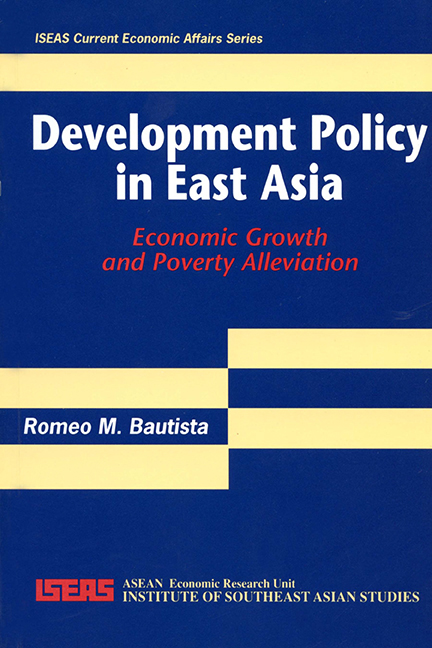Book contents
- Frontmatter
- Contents
- List of Tables
- 1 Introduction
- 2 Measures of Development Performance
- 3 Analytical Considerations
- 4 Economic Conditions in 1965
- 5 Role of Development Policies
- 6 Some General Equilibrium Estimates of Policy Effects
- 7 Redistributive Policies
- 8 Concluding Remarks
- Notes
- Bibliography
- The Author
6 - Some General Equilibrium Estimates of Policy Effects
Published online by Cambridge University Press: 21 October 2015
- Frontmatter
- Contents
- List of Tables
- 1 Introduction
- 2 Measures of Development Performance
- 3 Analytical Considerations
- 4 Economic Conditions in 1965
- 5 Role of Development Policies
- 6 Some General Equilibrium Estimates of Policy Effects
- 7 Redistributive Policies
- 8 Concluding Remarks
- Notes
- Bibliography
- The Author
Summary
Since the late 1970s, reflecting the growing concern about distributional and poverty issues, quantitative studies of East Asian developing economies have investigated the effects of government policies on absolute and relative poverty using empirical models of the “computable general equilibrium” (CGE) type. 14 The need for such studies is not hard to justify. Non-modelling studies can provide broad perspectives and useful insights on the determinants of poverty and income inequality but not empirical estimates of the impact of specific policies. Partial equilibrium approaches, on the other hand, are inherently deficient in view of their inability to take into systematic account the multitude of explanatory factors that operate simultaneously in an interactive fashion, many of which are difficult to anticipate. The growth and distributional effects of development policies are preferably analysed within a general equilibrium framework.
Based on the Walrasian general equilibrium structure, CGE models give emphasis to the consistency of intersectoral linkages in production, consumption, and trade, and the endogenous determination of relative prices subject to relevant macroeconomic and institutional constraints. 15 Assessment of economy-wide effects of government policies is based on comparisons between the model's counterfactual equilibrium solutions and the base-period or base-run values. A seminal contribution is the work of Adelman and Robinson on the South Korean economy, in which a dynamic CGE model is developed
to provide a laboratory for investigating the potential impact of standard economic policy instruments and programs intended to improve the relative and absolute incomes of the poor. (1978, p. 2)
The economy is disaggregated into twenty-nine producing sectors and four firm sizes within each sector. Several categories of households are distinguished: wage-earning (with seven professional sub-categories), self-employed (in manufacturing and services), capitalist, and agricultural (differentiating among labourers and four household classes distinguished by farm size). The time frame of the model is one year to nine years, providing scope for policy effects to work themselves out in the short-to-medium run.
- Type
- Chapter
- Information
- Development Policy in East AsiaEconomic Growth and Poverty Alleviation, pp. 40 - 46Publisher: ISEAS–Yusof Ishak InstitutePrint publication year: 1992



